How to Freeze and Revive Frozen Sourdough Starter
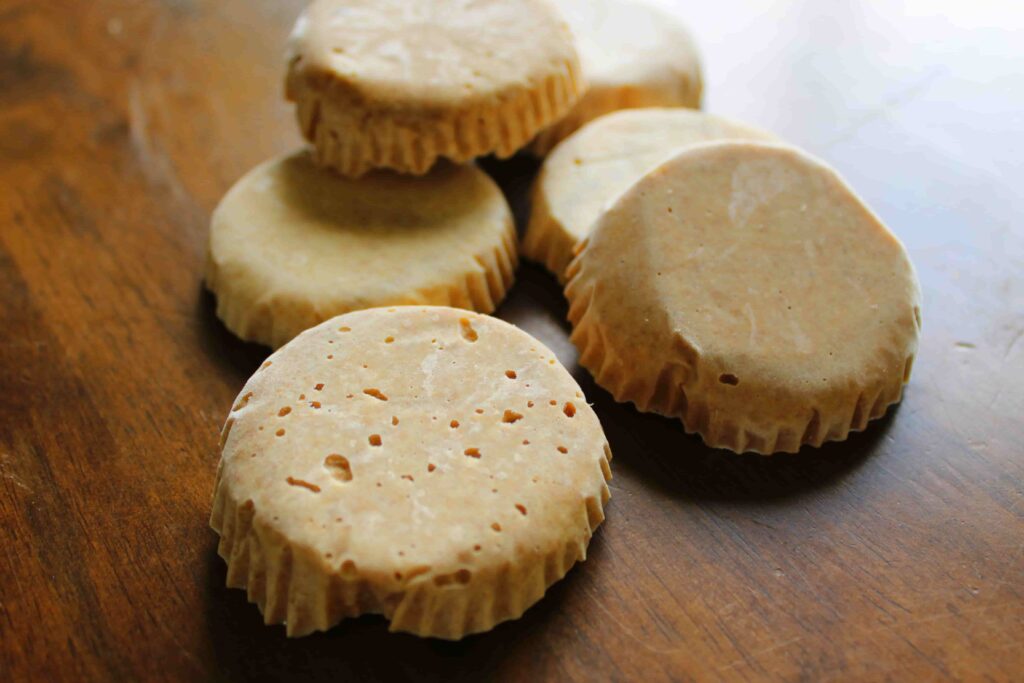
Yes, you can freeze sourdough starter for long term storage! If you don’t plan to use your starter for a while, follow this tutorial to properly store it in the freezer—and learn how to bring it back to life when you’re ready to bake again.
Does Freezing Kill Sourdough Starter?
Nope! When a sourdough starter is stored in the freezer, most of the wild yeasts and bacteria enter a dormant state. While some of the yeast may die, plenty will survive if stored properly. This means you can go for months without needing to feed the sourdough starter, then take it out and revive it again for baking!
Why Freeze Sourdough Starter?
If you’re anything like me, you may go for long periods of time without baking, which means the old sourdough starter gets neglected in the refrigerator. Especially when you have multiple sourdough starter types (like einkorn, rye, spelt, or regular wheat) in the refrigerator at the same time! It can be difficult to keep up with all of the sourdough and keep them healthy and thriving when you’re not baking on a weekly basis. Freezing sourdough starter is an excellent way to manage these issues!
- It’s a simple way to keep multiple types of sourdough starter on hand without having to remember to feed them all.
- It’s an easy way to take breaks from sourdough baking without having to think about your sourdough starters for a long time.
- It’s a great way to get extra fridge space!
How Long to Store Sourdough Starter in the Freezer?
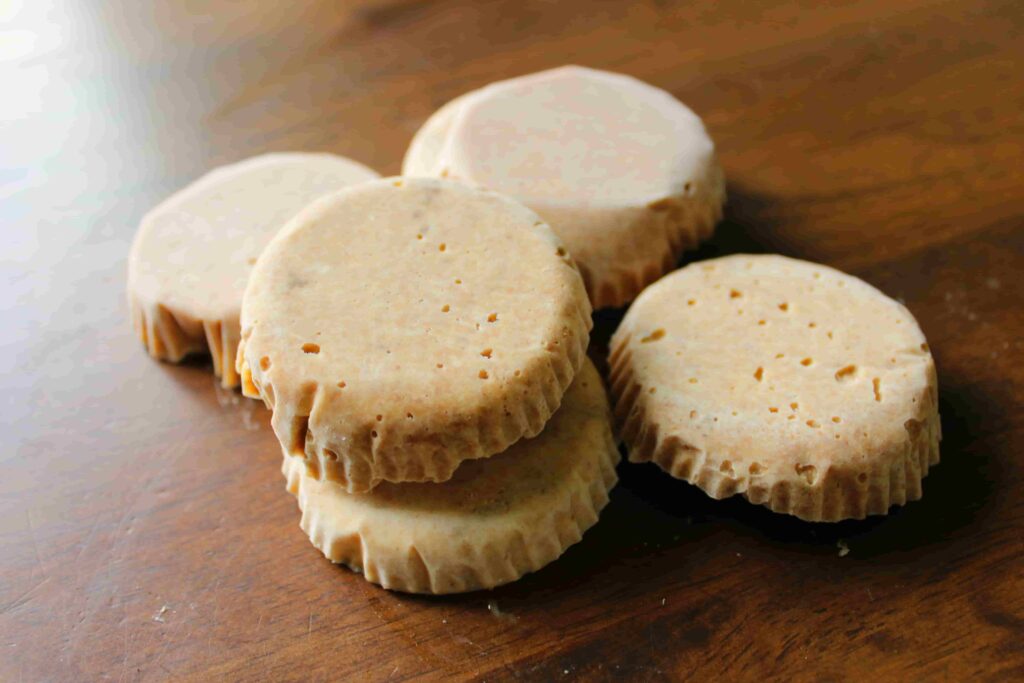
You can store sourdough starter for up to about 12 months if stored properly in an airtight container. Storing in the cold temperatures for much longer than that may result in freezer burn, meaning ice crystals can negatively impact the health and taste of your sourdough starter.
What Does Reviving Frozen Sourdough Starter Mean?
Since the wild yeast and bacteria enter a dormant state when frozen, you have to “wake them back up” by bringing them to room temperature and feeding them a few times before baking.
How Often To Feed Sourdough Starter in The Refrigerator
While sourdough starter can actually survive in the refrigerator for longer, it’s recommended to feed sourdough starter on a weekly basis for a healthy sourdough starter.
If you don’t bake very often, keeping a frozen stash of sourdough starter is a great way to keep some on hand without having to worry about feeding it very often.
What You Will Need to Freeze Sourdough Starter
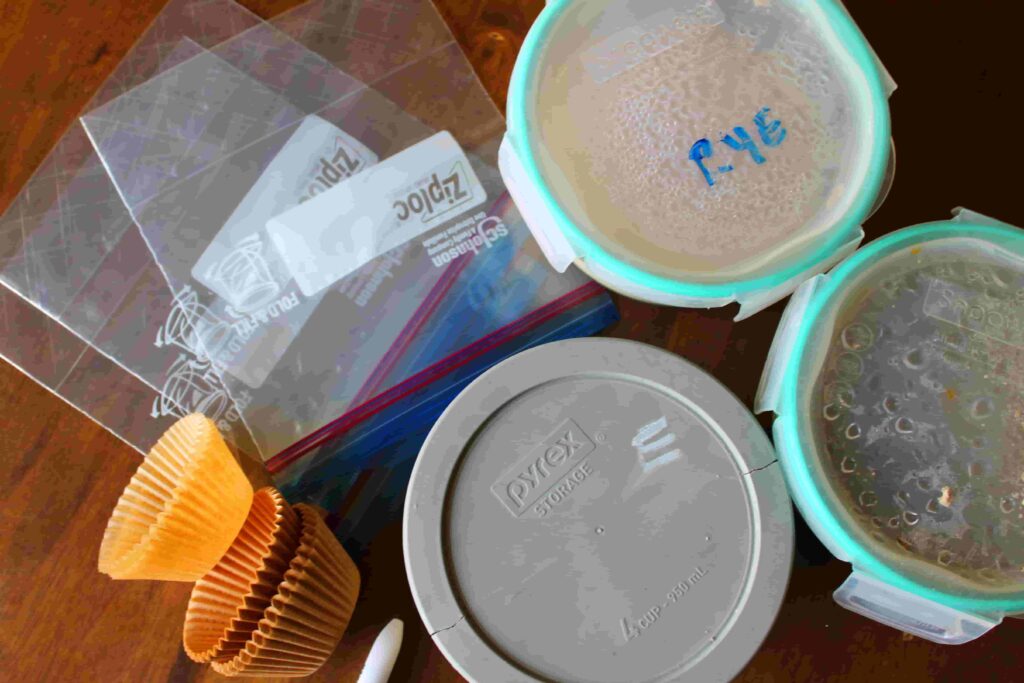
Mature sourdough starter: make sure to use an active starter at peak activity for the best results (so, feed it a few hours before freezing!).
Airtight container: to protect the frozen starter from freezer burn, use a ziplock bag, mason jar with a secure lid, or other freezer-safe container that is airtight.
Parchment paper or muffin liners: to freeze the starter initially, use muffin liner or parchment paper. Once frozen, you can transfer to the airtight container.
Muffin tin or silicone molds: using a mold like a muffin tin (with liners) or a silicone mold will make the process much easier.
How to Freeze Sourdough Starter
Feed a starter a few hours before freezing to ensure you have an active sourdough starter before beginning the freezing process.
Line a muffin tin with muffin liners (alternatively, you can use a silicone ice cube tray, or even just parchment paper set over a plate)
Using a clean non-metallic spoon, add about 1/4 cup of sourdough starter to each muffin liner or silicone mold (if using a piece of parchment paper on a plate, just place dollops of starter directly onto the parchment paper). I like to make 2 frozen portions for each type of sourdough starter at a time.
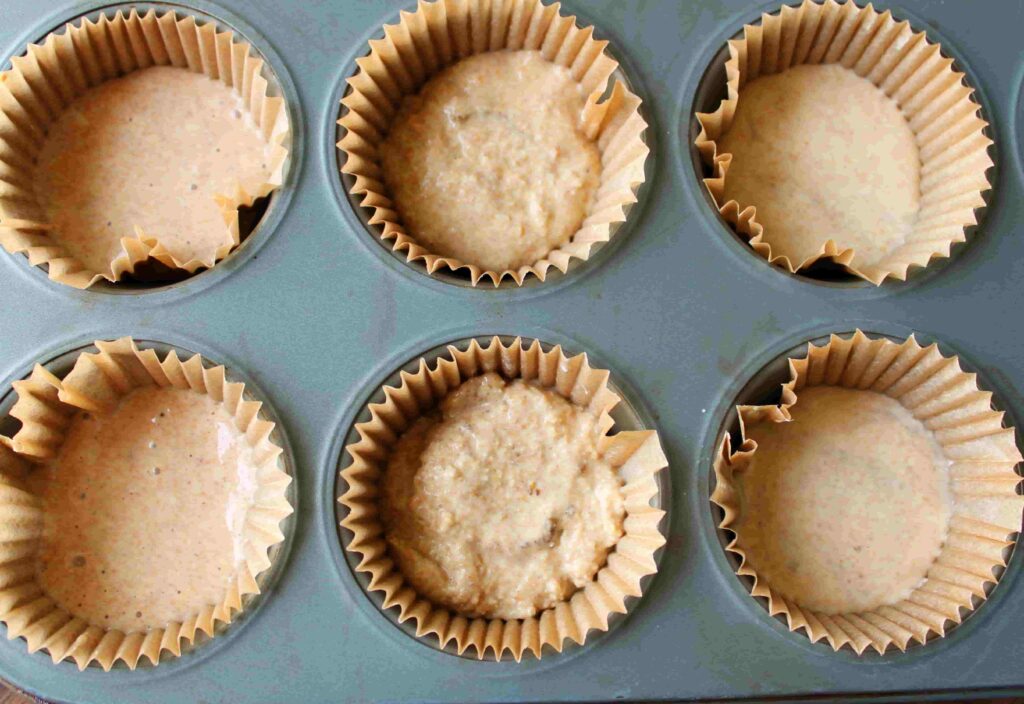
Place muffin tin, mold, or plate with sourdough into the freezer, uncovered for a few hours or over night (until fully frozen).
Once the sourdough starter portions are fully frozen, transfer to an airtight container. I like to fold the muffin liner around the frozen sourdough portions and place them in a freezer bag. You could also use a glass jar or container with a secure lid.
Make sure to label your container with the date of freezing and what kind of starter it is!
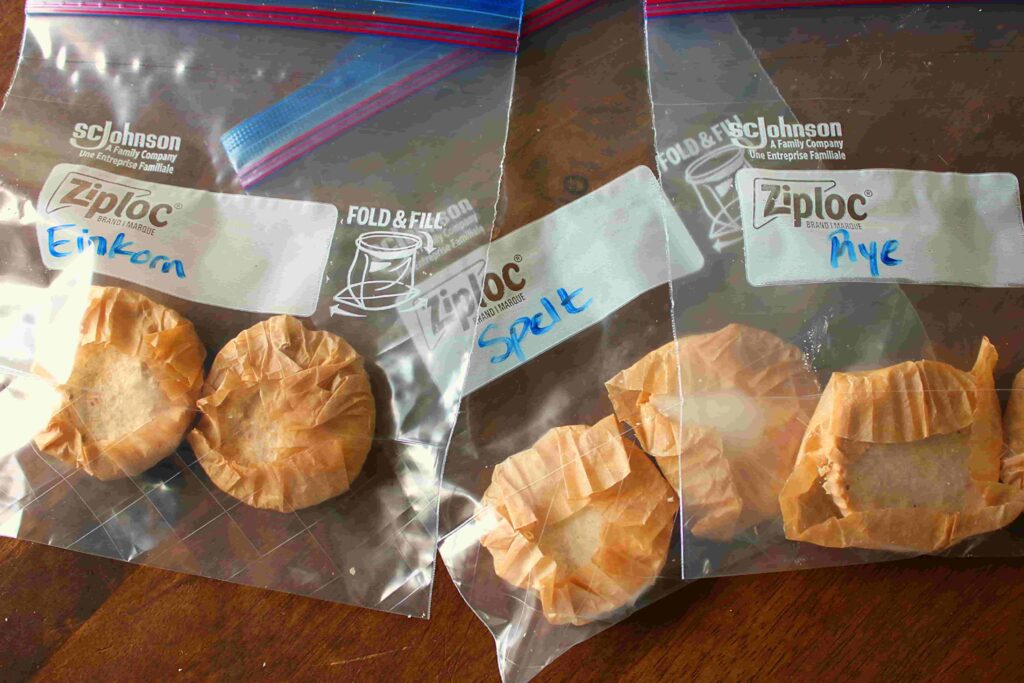
How to Revive a Frozen Sourdough Starter

Remove one portion of sourdough starter from the freezer.
Peel away any muffin liner or parchment paper and place sourdough starter portion in the bottom of a medium sized bowl.
Cover the bowl and place in a somewhat warm place (around room temperature) for 6 to 8 hours, or overnight.
Once the portion is fully thawed and is liquid, add 1/4 cup of filtered water and 1/2 cup of flour and combine well with a non-metallic spoon.
Let the starter rest for about 8 hours or until is is bubbly and active.
Discard half of the sourdough mixture (you can use it in a sourdough discard recipe).
Feed the remaining starter with 1/4 cup of filtered water and 1/2 cup of flour.
If the new starter shows signs of activity (like little bubbles) at about 6 hours, it can now be used for baking. If not, continue with regular feedings until it is bubbly and within 6 hours of feeding time.

How to Freeze and Revive Frozen Sourdough Starter
Equipment
- 1 muffin tin, silicone mold, or freezer safe plate
- muffin liners or parchment paper
- airtight containers like freezer bags or a mason jar with a secure lid
- 1 medium bowl with lid (for reviving starter)
Ingredients
- 1/4 cup active, bubbly sourdough starter (per portion)
- filtered water (for reviving)
- flour (for reviving)
Instructions
How to Freeze Sourdough Starter
- Feed a starter a few hours before freezing to ensure you have an active sourdough starter before beginning the freezing process.
- Line a muffin tin with muffin liners (alternatively, you can use a silicone ice cube tray, or even just parchment paper set over a plate)
- Using a clean non-metallic spoon, add about 1/4 cup of sourdough starter to each muffin liner or silicone mold (if using a piece of parchment paper on a plate, just place dollops of starter directly onto the parchment paper). I like to make 2 frozen portions for each type of sourdough starter at a time.
- Place muffin tin, mold, or plate with sourdough into the freezer, uncovered for a few hours or over night (until fully frozen).
- Once the sourdough starter portions are fully frozen, transfer to an airtight container. I like to fold the muffin liner around the frozen sourdough portions and place them in a freezer bag. You could also use a glass jar or container with a secure lid.
- Make sure to label your container with the date of freezing and what kind of starter it is!
How to Revive a Frozen Sourdough Starter
- Remove one portion of sourdough starter from the freezer.
- Peel away any muffin liner or parchment paper and place sourdough starter portion in the bottom of a medium sized bowl.
- Cover the bowl and place in a somewhat warm place (around room temperature) for 6 to 8 hours, or overnight.
- Once the portion is fully thawed and is liquid, add 1/4 cup of filtered water and 1/2 cup of flour and combine well with a non-metallic spoon.
- Let the starter rest for about 8 hours or until is is bubbly and active.
- Discard half of the sourdough mixture (you can use it in a sourdough discard recipe).
- Feed the remaining starter with 1/4 cup of filtered water and 1/2 cup of flour.
- If the new starter shows signs of activity (like little bubbles) at about 6 hours, it can now be used for baking. If not, continue with regular feedings until it is bubbly and within 6 hours of feeding time.






